Champions of Change Blog
Creating Next Generation Innovators Through Space Education
Posted by on June 6, 2013 at 6:10 PM EDT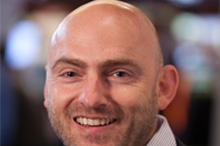
Peter Platzer is being honored as a Champion of Change for his accomplishments as a crowdfunding pioneer.
NanoSatisfi is a commercial satellite and education company using the inherent fascination with space to motivate students in the areas of science, technology, engineering, and math. By providing individuals with access to their own orbiting satellite for project-based learning, I believe that we can move the needle towards a new generation of innovators who are comfortable with cutting-edge technology, experimentation, and real data analysis to learn and solve problems. I am also convinced that this focus on technology education is not something that should be available solely for a handful of the best or wealthiest students. Girls and boys of every background and status should be learning the skills that will make them—and the United States—successful over the next thirty years, so that as an entire generation and country we have the technical skills, mindset, and passion to solve big problems.
Right now is an exciting and critical time for the education sector in the United States. As debates rage about standardized testing regimes and school districts struggle with funding, experiments with blended learning and online engagement are driving new ways of thinking about what makes an educational experience successful. By leveraging technology that allows students to engage in content at their own pace, while using classroom time for richer student-teacher interaction and team-based projects, we now have pilot programs that offer a promising glimpse of a new paradigm. At one end of this spectrum, Massive Open Online Courses (MOOCs) currently operate outside of formal channels and exclusively online, but also incorporate an important person-to-person component that is organized by students themselves.
NanoSatisfi has observed these trends and has taken the best of online learning combined with hands-on doing to create a program that we view as one model for the future. We provide online learning similar to MOOCs, but rather than making it a discrete course with a beginning and an end, we provide “building blocks” that a student, teacher, or parent can move around and adjust based on individual needs. We aim to make learning an exploratory process, while also bringing some glamor back to teaching.
The process begins with our online satellite Control Center, where students obtain integrated access to the satellite programming interface, a library of pre-built applications, and instructional content. The more advanced student can skip introductory sessions to begin learning our more advanced sensors right away (such as the spectrometer) and start designing an experiment. The beginner student can start with pre-coded applications that require pushing a few buttons and downloading space data to an Excel spreadsheet. Any student can test their programming instructions, whether by validating through our system or testing on a satellite-compatible microprocessor attached to their laptop. Using an Internet connection, students upload final instructions to the satellite via NanoSatisfi, track the satellite in orbit, and download their data for further analysis.
NanoSatisfi’s first four satellites are launching this year and we are releasing a beta version of our online platform this month. We already have our first satellite fully booked through our supporters on the crowdfunding platform Kickstarter, which demonstrates the imaginative power of what we are doing at NanoSatisfi. We are in conversations with a number of schools across California and Texas that will work with us to pilot our initiative during the Fall 2013 semester. Pilot schools will provide us with ongoing feedback that allows us to constantly improve our learning and engagement platform, as well as the sensors and capabilities of our satellites.
When I discuss NanoSatisfi in various forums throughout the United States, there is always someone who brings up the usability of satellites outside of the education sphere. NanoSatisfi does believe that there is very real competitive economic value for enterprise data collected from a constellation of satellites; in fact, it is a $16 billion industry. For example, the weather and climate industry could benefit from data acquired much more cheaply and frequently than current programs allow. In a time of budgetary constraints, we see our traditional billion dollar weather satellite programs delayed, on hold, or even cancelled. This creates an opportunity to provide innovative solutions based on our fast, flexible, and relatively affordable satellite technology. Space weather is yet another example of the potential applications for our constellation of satellites.
At the same time, education is something that we strongly believe is important to America’s future. NanoSatisfi is committed to providing education in an engaging and inspirational way to students long into the future.
Peter Platzer is Co-Founder and CEO of NanoSatisfi.
Learn more about Economy, TechnologyMaking a Real Food Revolution
Posted by on June 6, 2013 at 6:06 PM EDT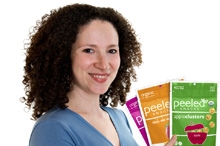
Noha Waibsnaider is being honored as a Champion of Change for her accomplishments as a crowdfunding pioneer.
From Michelle Obama’s Let’s Move campaign to Jamie Oliver’s Food Revolution, from New York Mayor Bloomberg’s ban on large sodas to California’s proposition to label genetically modified food, healthy eating is being discussed more thoughtfully than ever before. People want real food: more and more people shop at farmers’ markets, and they care whether the food is organic, where it was sourced from, how it was made.
In 2004, while working for a large food company, I learned that 80% of food sold in grocery stores is loaded with added sugar and preservatives. I was horrified by this version of “food” and decided that I needed to make something better. I grew up eating dried fruit, a healthy snack that people all over the world have been eating for thousands of years. Thus, Peeled Snacks was born: organic fruit snacks that provide a natural source of fiber, vitamins, and real energy, without a sugar crash.
The label on our snacks says, “Our goal at Peeled Snacks is simple: to make you feel good about snacking.” We do this by working closely with farmers and suppliers to make real, nourishing, and tasty food, and by engaging our community about the impact of food on body, mind, and the world. We use only organic ingredients in order to ensure that the farmland and workers (and you!) are not exposed to dangerous pesticides and chemicals. We also investigate and encourage our farmer partners’ dedication to sustainable agriculture and fair working conditions.
My husband likes to say I had a great idea six years too early. It took a lot more time and money than I expected to get Peeled Snacks through those years. I was fortunate to find supportive investors who share our vision to provide real food. Last year, many of our investors found us through CircleUp, a crowdfunding portal. I’m grateful to President Obama for his efforts to enable investment-based crowdfunding through the JOBS Act, and for recognizing me as a White House Champion of Change.
Today, Peeled Snacks are available nationwide in airports and on Amazon, and they’re quickly making it to grocery stores around the U.S. The little company I started eight years ago is making waves and providing healthy food options across our country. As part of the Real Food revolution, I am doing my part to change our food landscape, influencing large companies to make healthier food, and hopefully creating a healthier tomorrow for all of us. I feel extremely privileged that my job is to make people feel good about the food choices they have and the tasty snacks they eat.
Noha Waibsnaider is Founder and CEO of Peeled Snacks.
Learn more about Economy, TechnologyCrowdfunding, Solar Power, and Youth Employment
Posted by on June 6, 2013 at 5:59 PM EDT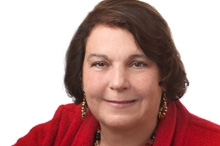
Michele Clark is being honored as a Champion of Change for her accomplishments as a crowdfunding pioneer.
The Youth Employment Partnership (YEP) is Oakland, California’s most experienced and effective youth employment-training agency. YEP is in its 40th year of providing workforce development services to youth from Oakland’s most distressed neighborhoods, by embracing innovation whenever possible and leveraging resources to better serve the needs of its teen and young adult clients.
YEP procured its award-winning 36,000 square-foot training facility using highly innovative, nontraditional financing through a partnership with a local corporation, Give Something Back. YEP trainees renovated their building using materials reclaimed and recycled from the decommissioned military base through a large-scale deconstruction project utilizing Youth Build and Welfare to Work participants. The project not only produced invaluable vocational and employability skill training, but also provided the materials needed to complete the agency's facility.
In addition to the economic and vocational development projects based at the training facility, YEP operates two cafes at the Oakland International Airport. By working at these Training Grounds cafes, teens and young adults learn customer service skills and the principles of operating a successful social enterprise. Consistent with our living classroom model, YEP also utilizes vacant, distressed houses as training opportunities, leading the way in training at-risk youth in green construction techniques to renovate houses for low-income families in our community.
In YEP’s quest to convert our training facility to sustainable green energy, we were introduced to Solar Mosaic, a company that presented an innovative crowdfunding strategy to finance the construction of a 46 kilowatt solar power array on our roof. Not only does the system provide enough inexpensive, renewable energy to power existing operations, but it will also handle the energy required for the computer education center and industrial training kitchen planned for completion this year. Consistent with the agency mission, YEP uses the solar system itself as an opportunity to provide a hands-on resource for training youth on the installation and maintenance of photovoltaic systems.
Michele Clark is Executive Director of the Youth Employment Partnership.
Learn more about Economy, TechnologyCollaborating to Transform Scientific Research
Posted by on June 6, 2013 at 5:42 PM EDT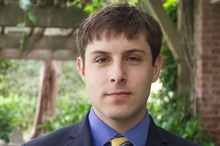
Max Hodak is being honored as a Champion of Change for his accomplishments as a crowdfunding pioneer.
I started Transcriptic when I realized that science is driven forward at least as much by tools, and the availability of tools, as it is by the flashes of insight ordinarily associated with the research process. It costs hundreds of thousands or millions of dollars today to build a lab, and as much over the following few years to operate it. Especially considering the fact that much of basic research is publicly-funded on tight budgets, this means that there are very harsh constraints on what questions are asked and how quickly those that are asked may be answered. At Transcriptic we—all seven of us—hope to change that by building for the life sciences what “cloud computing” has been for the Internet over the last decade.
When we started the company, Transcriptic was funded in part by a group of over sixty “angel” investors, investing alongside several traditional venture capital funds. This was not an obvious financing decision, and it has had some interesting side effects. Businesses are often seen as an “us-versus-them” propositions—handling competitive threats, negotiating deals, and winning market share are adversarial processes. But having so many people bought in, and including them in our company, changed the tone.
Startups are hard, and as much as we tune it out, it does make a difference to hear the world cheering you on instead of listing all the reasons why what you’re doing won’t work. We’re used to being skeptical and cautious and pessimistic. Since so many startups do fail, these traits will make you correct the majority of the time. Any successful new venture requires suspension of disbelief at some point, though. You can’t overcome the countless obstacles between you and changing the world if you believe that you are likely to work extremely hard and still fail anyway.
Crowdfunding is ultimately about being more inclusive—about making it us and them instead of us versus them. It allows a wide range of people to participate in a young company’s growth and see firsthand their successes and setbacks along the way. It’s a risky investment, but it’s about more than just the financial return. It’s about connecting individuals with the innovation that represents our future. It’s about being involved and having an impact in your world.
When investment-based crowdfunding becomes available under the JOBS Act, it will make the new venture creation process more collaborative and open, encouraging the earliest stages of many new companies. It will be about changing the discussion from all of the reasons why a crazy idea won’t work to figuring out how to solve them. I am very excited to see what comes out of this new, more open and supportive environment.
Max Hodak is Founder of Transcriptic.
Learn more about Economy, TechnologyThe Open Source Industrial Revolution
Posted by on June 6, 2013 at 5:38 PM EDT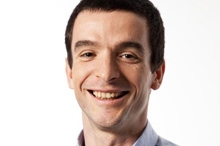
Marcin Jakubowski is being honored as a Champion of Change for his accomplishments as a crowdfunding pioneer.
I started a group called Open Source Ecology that is working on the Global Village Construction Set (GVCS). The GVCS is a modular, low-cost, DIY, high-performance platform that allows for the easy fabrication of the 50 different machines that it takes to build a small, sustainable civilization with modern comforts. This is a big, hairy, audacious goal, and you can learn more about it in my TED Talk on starting civilization from scratch.
To develop this platform, we are using crowd-based development, and our roots lie in crowdfunding. When I started the project, I quickly ran out of funds, so I turned to the crowd for support. When we wanted to build one of our machines, we simply documented all of our work, published our plans on our wiki, and set up a crowdfunding basket where people could contribute to the specific project over the internet. We now have a base of about 500 “True Fans” who support our work with small donations.
We have grown tremendously since the TED Talk put us on the world stage, and our next step is to develop pilot projects so that our work can be replicated all over the world. We want our work to be adapted to the unique conditions of wherever our machines are built, and our open platform allows this to happen.
We are also developing our collaborative design methods to accelerate innovation. With the internet tools available today, and the ability to prototype things rapidly with tools such as 3D printers, we can reach unprecedented rates of innovation and development. We invite you to join us in our Design Sprints, where we are breaking the barriers to collaboration on developing new designs, and creating the next industrial revolution—the open source industrial revolution.
Marcin Jakubowski is Founder of Open Source Ecology.
Learn more about Economy, TechnologyUndersea Exploration for Everyone
Posted by on June 6, 2013 at 5:20 PM EDT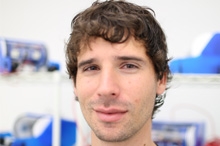
Eric Stackpole is being honored as a Champion of Change for his accomplishments as a crowdfunding pioneer.
There is so much out there to explore. And while remote patches of land or distant objects in outer space may be the first things that come to mind when exploration is mentioned, the environments that exist underwater—sometimes only tens of meters from the shore—hold a plethora of secrets about how our world works. All that is needed to get a view of this mysterious world is a group of interested people and the right tools.
A few years ago, David Lang and I created a platform to make exploration of the unseen deep possible for anyone. We call it OpenROV. At the center of this effort has been the OpenROV submarine—a shoebox-sized, low-cost, completely open-source underwater remotely operated vehicle (“ROV”) we developed that can be controlled from a laptop computer and that sends live video from its on-board camera as it flies beneath the waves. Although the OpenROV uses mostly off-the-shelf parts and costs less than a good digital camera, it is capable of journeying to depths beyond where most scuba divers can go, so it can be used as a tool for real exploration.
When used recreationally or for education, OpenROV can provide a hands-on learning opportunity for people who want to better understand what goes on in the water around them. Because OpenROV is sold as a kit and has lots of space for additional electronics and payloads, it is also a great learning and development platform for people who want to innovate on their own. We believe that by making tools like OpenROV accessible to everyone, we can democratize underwater exploration.
Over the last two years, OpenROV has grown from a small group of interested tinkerers to a thriving community of over 1,700 exploration and technology enthusiasts from more than 50 countries. Everyone in the OpenROV community can contribute to the design and use of OpenROV technology so that its capability is continuously evolving. A crowdfunding platform provided the funds needed to get OpenROV off the ground and, more importantly, connected us to hundreds of people who were excited to participate. This community has become the beating heart of the project and has enabled innovation to happen at an incredible rate.
Community-based development allows us to innovate faster, and at a lower cost. The value that we are creating goes beyond profit; it advances citizen science, encourages STEM (science, technology, engineering, and mathematics) education, and enables curious explorers. I am grateful that our efforts at OpenROV have been recognized, and I am deeply honored to have been invited to the White House as part of the Champions of Change program.
Eric Stackpole is Co-Founder of OpenROV, Inc., and Creator of the OpenROV submarine.
Learn more about Economy, Technology
- &lsaquo previous
- …
- 63
- 64
- 65
- 66
- 67
- 68
- 69
- 70
- 71
- …
- next &rsaquo
White House Blogs
- The White House Blog
- Middle Class Task Force
- Council of Economic Advisers
- Council on Environmental Quality
- Council on Women and Girls
- Office of Intergovernmental Affairs
- Office of Management and Budget
- Office of Public Engagement
- Office of Science & Tech Policy
- Office of Urban Affairs
- Open Government
- Faith and Neighborhood Partnerships
- Social Innovation and Civic Participation
- US Trade Representative
- Office National Drug Control Policy
categories
- AIDS Policy
- Alaska
- Blueprint for an America Built to Last
- Budget
- Civil Rights
- Defense
- Disabilities
- Economy
- Education
- Energy and Environment
- Equal Pay
- Ethics
- Faith Based
- Fiscal Responsibility
- Foreign Policy
- Grab Bag
- Health Care
- Homeland Security
- Immigration
- Innovation Fellows
- Inside the White House
- Middle Class Security
- Open Government
- Poverty
- Rural
- Seniors and Social Security
- Service
- Social Innovation
- State of the Union
- Taxes
- Technology
- Urban Policy
- Veterans
- Violence Prevention
- White House Internships
- Women
- Working Families
- Additional Issues

